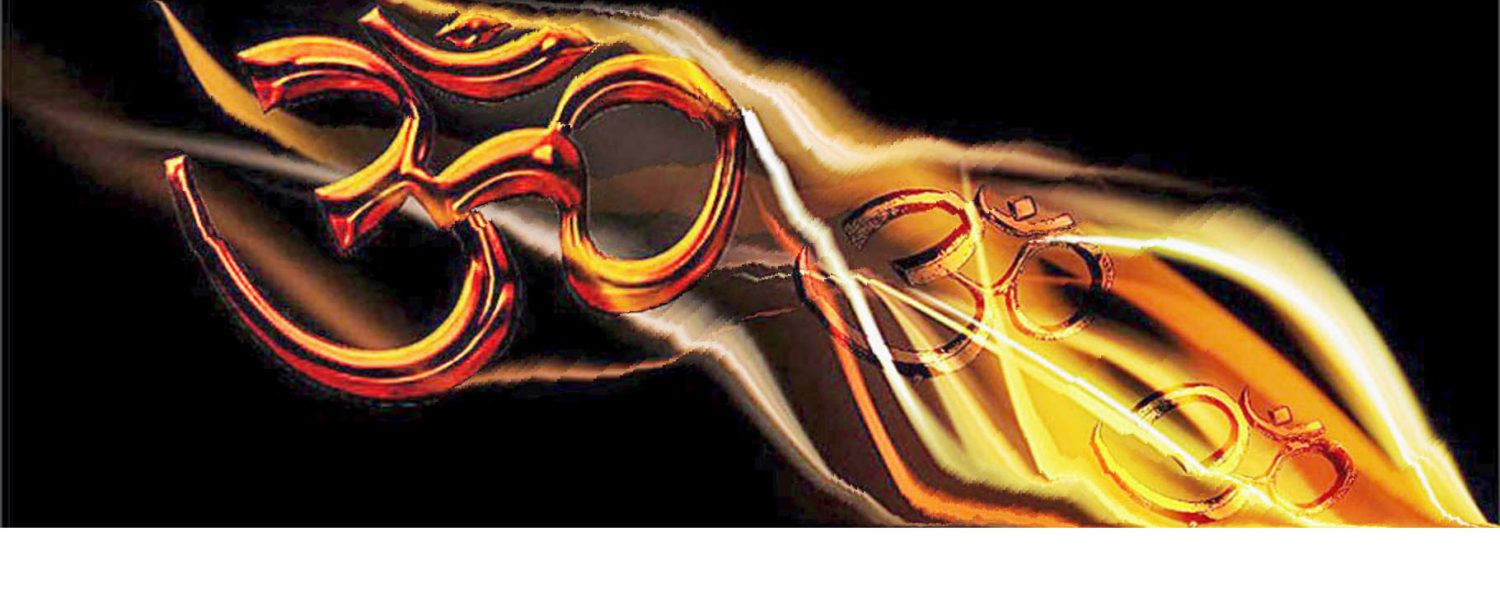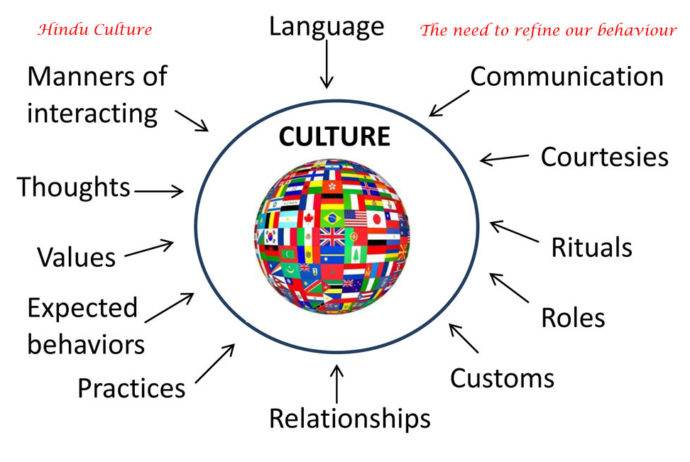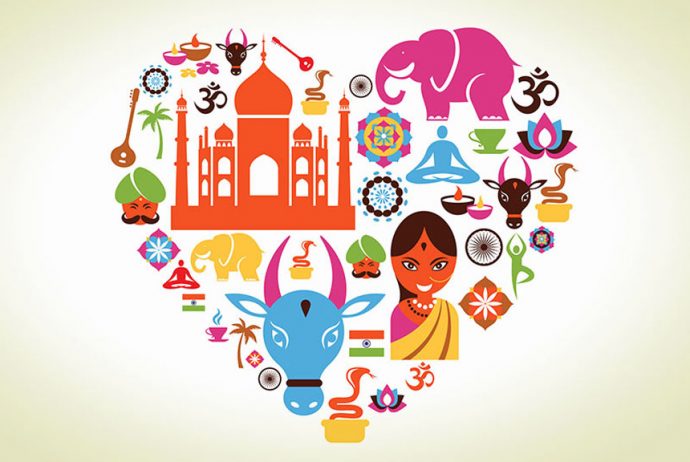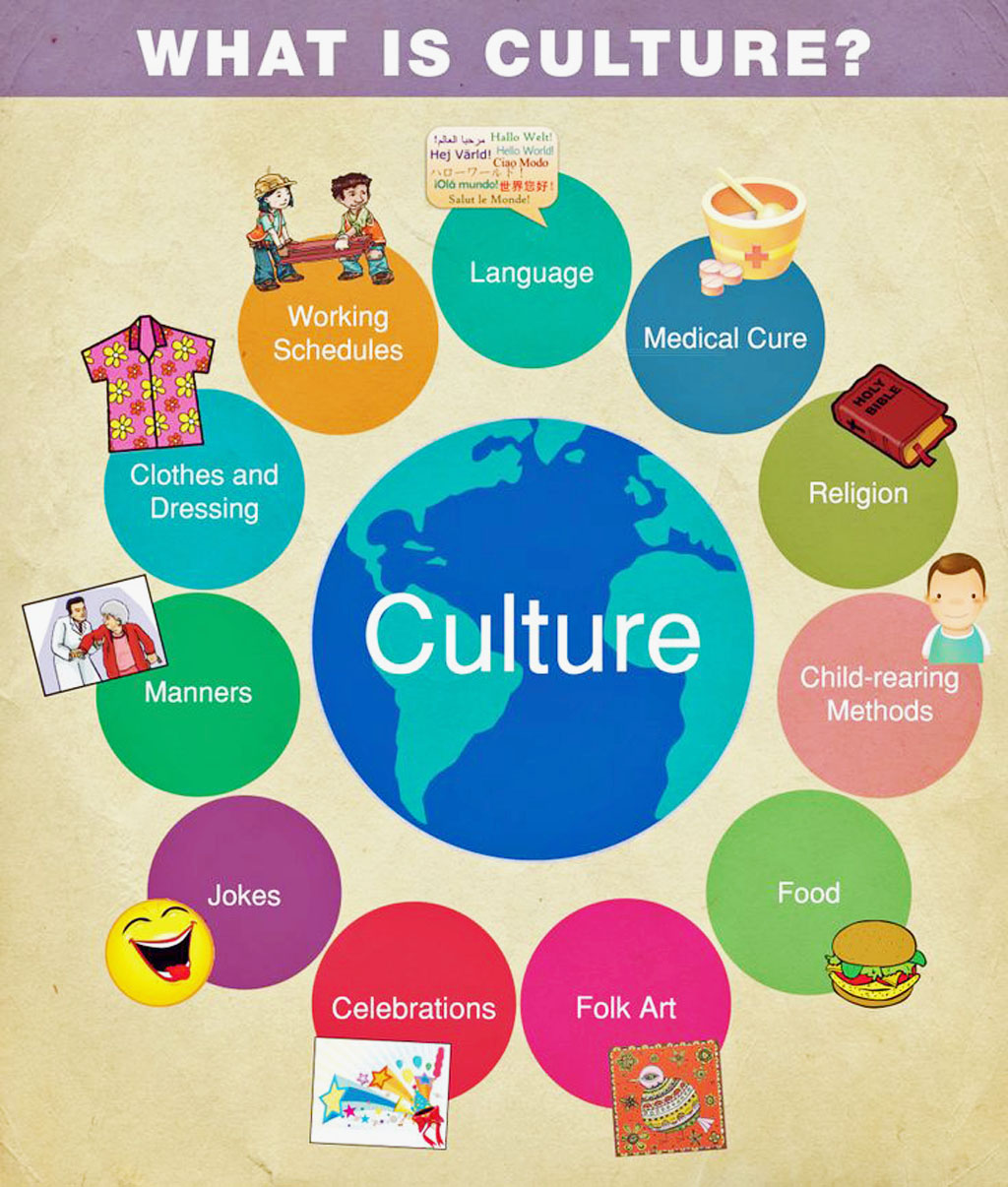What is Om… Aum… ॐ…
OM or AUM signifies the One Eternal Being which is The Beginning, Middle and End of All Beings.
The Beginning
Explanation from a Sage
On such a profound and important subject of Om, it is only right that I start with the authority of a Sage. In the words of Sri Ramana Maharshi : “In the sphere of speech, Pranava (the mystic sound AUM) represents the transcendental (nirguna). Om is the eternal truth. That which remains over after the disappearance of objects is Om. It does not merge in anything. It is the State of which it is said: “Where one sees none other, hears none other, knows none other, that is Perfection.” (Yatra nanyat pasyati, nanyat srunoti, nanyat vijanati sa bhuma.) All the upasanas are ways to winning it. One must not get stuck in the upasanas, but must query “Who am I?” and find the Self.”
The Middle
Meaning of Om
Om represents the Eternal, Absolute, Unlimited, All-pervading, All-powerful, Blissful Reality, the One Self.
Om or Aum, is constructed with three sounds. A (pronounced as Ah), U (pronounced as Ooh), M (pronounced as Im as in him). Ah is the Beginning sound, Ooh is the Middle and Im is the End. A (Ah) emanates from deep in the body indicating the beginning, U (Ooh) emanates from the throat indicating the middle, M (Im) is said with closed lips, indicating the end. Together they indicate the Being-Consciousness-Bliss Self, as the One that is the Beginning, Middle and End of all Beings.
Again, A (Ah) refers to the Waking State, U (Ooh) refers to the Dream State and M (Im) refers to the Deep Sleep State. When Om or Aum is chanted, there is a brief silence afterwards. This Silence indicates the Absolute Blissful Being Reality.
Where is Om used
Om, (Auṃ or Oṃ, Devanagari: ॐ) is a sacred sound and a spiritual icon in Hindu religion. It is also a mantra in Hinduism, Buddhism, Jainism, and Sikhism.
Om is part of the iconography found in ancient and medieval era manuscripts, temples, monasteries and spiritual retreats in Hinduism, Buddhism, and Jainism.
What is Om in Hinduism
In Hinduism, Om is one of the most important spiritual symbols (pratima). It refers to Atman (soul, self within) and Brahman (ultimate reality, entirety of the universe, truth, divine, supreme spirit, cosmic principles, knowledge). The syllable is often found at the beginning and the end of chapters in the Vedas, the Upanishads, and other Hindu texts by great Sages of India. It is a sacred spiritual incantation made before and during the recitation of spiritual texts, during puja and private prayers, in ceremonies of rites of passages (sanskara) such as weddings, and sometimes during meditative and spiritual activities such as Yoga.
The syllable is also referred to as omkara (ओंकार, oṃkāra), aumkara (औंकार, auṃkāra), and pranava (प्रणव, praṇava).
The syllable Om is referred to as praṇava. Other used terms are akṣara (literally, letter of the alphabet, imperishable, immutable) or ekākṣara (one letter of the alphabet), and omkāra (literally, beginning, female divine energy).
The Om symbol ॐ is a ligature in Devanagari, combining ओ (au) and chandrabindu (ँ, ṃ).
How is Om used in Hinduism
Om came to be used as a standard utterance at the beginning of mantras, chants or citations taken from the Vedas. For example, the Gayatri mantra, which consists of a verse from the Rigveda Samhita (RV 3.62.10), is prefixed not just by Om but by Om followed by the formula bhūr bhuvaḥ svaḥ, waking, dream and deep sleep. Such recitations continue to be in use in Hinduism, with many major incantations and ceremonial functions beginning and ending with Om.
What do the Upanishads say about Om
The syllable Om is first mentioned in the Upanishads, the mystical texts associated with the Vedanta philosophy. It has variously been associated with concepts of “cosmic sound” or “mystical syllable” or “affirmation to something divine”, or as symbolism for abstract spiritual concepts in the Upanishads. In the Aranyaka and the Brahmana layers of Vedic texts, the syllable is so widespread and linked to knowledge, that it stands for the “whole of Veda”.
The origin and historic foundations of Om are repeatedly discussed in the oldest layers of the Vedantic texts (the early Upanishads). The Aitareya Brahmana of Rig Veda, in section 5.32, for example suggests that the three phonetic components of Om (pronounced AUM) correspond to the three stages of cosmic creation, and when it is read or said, it celebrates the creative powers of the universe.
The Brahmana layer of Vedic texts equate Om with Bhur-bhuvah-Svah (waking, dream, deep sleep), the latter symbolizing “the whole Veda”. They offer various shades of meaning to Om, such as it being “the universe beyond the sun”, or that which is “mysterious and inexhaustible”, or “the infinite language, the infinite knowledge”, or “essence of breath, life, everything that exists”, or that “with which one is liberated”.
The Sama Veda, the poetical Veda, orthographically maps Om to the audible, the musical truths in its numerous variations (Oum, Aum, Ovā Ovā Ovā Um, etc.) and then attempts to extract musical meters from it.
Specific references from Upanishads
Om is a common symbol found in the ancient texts of Hinduism, such as in the first line of Rig veda, as well as an icon in temples and spiritual retreats.
The syllable “Om” is described with various meanings in the Upanishads. Descriptions include “the sacred sound, the Yes!, the Vedas, the Udgitha (song of the universe), the infinite, the all encompassing, the whole world, the truth, the ultimate reality, the finest essence, the cause of the Universe, the essence of life, the Brahman, the Atman, the vehicle of deepest knowledge, and Self-knowledge”.
Chandogya Upanishad
The Chandogya Upanishad is one of the oldest Upanishads of Hinduism. It opens with the recommendation that “let a man meditate on Om”. It calls the syllable Om as udgitha (उद्गीथ, song, chant), and asserts that the significance of the syllable is thus: the essence of all beings is earth, the essence of earth is water, the essence of water are the plants, the essence of plants is man, the essence of man is speech, the essence of speech is the Rig Veda, the essence of the Rig Veda is the Sama Veda, and the essence of Sama Veda is the udgitha (song, Om).
Chandogya Upanishad states that Rik (ऋच्, Ṛc) is speech, and Sāman (सामन्) is breath; they together produce song. The highest song is Om, asserts section 1.1.1. It says: “Let a man meditate on the syllable Om, called the udgitha; for the udgitha (a portion of the Sama-veda) is sung, beginning with Om.” It is the symbol of awe, of reverence, of threefold knowledge.
The second volume of the first chapter continues its discussion of syllable Om, explaining its use as a struggle between Devas (gods) and Asuras (demons). Ancient Indian scholars have considered this struggle between gods and demons as representing the good and evil inclinations within man, respectively. The legend in section 1.2 of Chandogya Upanishad states that gods took the Udgitha (song of Om) unto themselves, thinking, “with this song we shall overcome the demons”. The syllable Om is thus implied as that which inspires the good inclinations within each person.
Chandogya Upanishad’s exposition of syllable Om in its opening chapter combines the origin of Om, its metric structure and philosophical themes. In the second chapter of the Chandogya Upanishad, the meaning and significance of Om evolves into a philosophical discourse, such as in section 2.10 where Om is linked to the Highest Self, and section 2.23 where the text asserts Om is the essence of three forms of knowledge, Om is Brahman and “Om is all this”.
Katho Upanishad
The Katho Upanishad is the legendary story of a little boy, Nachiketa – the son of sage Vajasravasa – who meets Yama, the Indian deity of death. Their conversation evolves to a discussion of the nature of man, knowledge, Atman (Soul, Self) and moksha (liberation). In section 1.2, Katho Upanishad characterizes Knowledge/Wisdom as the pursuit of good, and Ignorance/Delusion as the pursuit of pleasant, that the essence of Veda is make man liberated and free, look past what has happened and what has not happened, free from the past and the future, beyond good and evil, and one word for this essence is the word Om.
Katho Upanishad, 1.2.15-1.2.16 : Quote
The word which all the Vedas proclaim,
That which is expressed in every Tapas (penance, austerity, meditation),
That for which they live the life of a Brahmacharin,
Understand that word in its essence: Om! that is the word.
Yes, this syllable is Brahman,
This syllable is the highest.
He who knows that syllable,
Whatever he desires, is his.
Maitri Upanishad
The Maitrayaniya Upanishad in sixth lesson discusses the meaning and significance of Om. The text asserts that Om represents Brahman-Atman. The three roots of the syllable, states the Maitri Upanishad, are A + U + M. The sound is the body of Soul, and it repeatedly manifests in three: as gender-endowed body – feminine, masculine, neuter; as light-endowed body – Agni, Vayu and Aditya; as deity-endowed body – Brahma, Rudra and Vishnu; as mouth-endowed body – Garhapatya, Dakshinagni and Ahavaniya; as knowledge-endowed body – Rig, Saman and Yajur; as world-endowed body – Bhūr, Bhuvaḥ and Svaḥ (waking, dream, deep sleep); as time-endowed body – Past, Present and Future; as heat-endowed body – Breath, Fire and Sun; as growth-endowed body – Food, Water and Moon; as thought-endowed body – intellect, mind and pysche.[59][63] Brahman exists in two forms – the material form, and the immaterial formless.[64] The material form is changing, unreal. The immaterial formless isn’t changing, real. The immortal formless is truth, the truth is the Brahman, the Brahman is the light, the light is the Sun which is the syllable Om as the Self.
The Maitri Upanishad asserts : The world is Om, its light is Sun, and the Sun is also the light of the syllable Om. Meditating on Om, is acknowledging and meditating on the Brahman-Atman (Soul, Self).
Mundaka Upanishad
The Mundaka Upanishad in the second part, suggests the means to knowing the Self and the Brahman to be meditation, self-reflection and introspection, that can be aided by the symbol Om.
Mundaka Upanishad, 2.2.2 – 2.2.4 : Quote
That which is flaming, which is subtler than the subtle,
on which the worlds are set, and their inhabitants –
That is the indestructible Brahman.
It is life, it is speech, it is mind. That is the real. It is immortal.
It is a mark to be penetrated. Penetrate It, my friend.
Taking as a bow the great weapon of the Upanishad,
one should put upon it an arrow sharpened by meditation,
Stretching it with a thought directed to the essence of That,
Penetrate that Imperishable as the mark, my friend.
Om is the bow, the arrow is the Soul, Brahman the mark,
By the undistracted man is It to be penetrated,
One should come to be in It,
as the arrow becomes one with the mark.
Adi Shankara, in his review of the Mundaka Upanishad, states Om as a symbolism for Atman (soul, self).
Mandukya Upanishad
The Mandukya Upanishad opens by declaring, “Om!, this syllable is this whole world”. Thereafter it presents various explanations and theories on what it means and signifies. This discussion is built on a structure of “four fourths” or “fourfold”, derived from A + U + M + “silence” (or without an element).
Aum as all states of time
In verse 1, the Upanishad states that time is threefold: the past, the present and the future, that these three are “Aum”. The four fourth of time is that which transcends time, that too is “Aum” expressed.
Aum as all states of Atman
In verse 2, states the Upanishad, everything is Brahman, but Brahman is Atman (the Soul, Self), and that the Atman is fourfold.
Aum as all states of consciousness
In verses 3 to 6, the Mandukya Upanishad enumerates four states of consciousness: wakeful, dream, deep sleep and the state of ekatma (being one with Self, the oneness of Self). These four are A + U + M + “without an element” respectively.
Aum as all states of knowledge
In verses 9 to 12, the Mandukya Upanishad enumerates fourfold etymological roots of the syllable “Aum”. It states that the first element of “Aum” is A, which is from Apti (obtaining, reaching) or from Adimatva (being first). The second element is U, which is from Utkarsa (exaltation) or from Ubhayatva (intermediateness). The third element is M, from Miti (erecting, constructing) or from Mi Minati, or apīti (annihilation). The fourth is without an element, without development, beyond the expanse of universe. In this way, states the Upanishad, the syllable Om is indeed the Atman (the self).
Shvetashvatara Upanishad
The Shvetashvatara Upanishad, in verses 1.14 to 1.16, suggests meditating with the help of syllable Om, where one’s perishable body is like one fuel-stick and the syllable Om is the second fuel-stick, which with discipline and diligent rubbing of the sticks unleashes the concealed fire of thought and awareness within. Such knowledge, asserts the Upanishad, is the goal of Upanishads. The text asserts that Om is a tool of meditation empowering one to know the God within oneself, to realize one’s Atman (Soul, Self).
Aitareya Aranyaka Upanishad
Aitareya Aranyaka explains Om as “an acknowledgment, melodic confirmation, something that gives momentum and energy to a hymn”.
Om (ॐ) is the pratigara (agreement) with a hymn.
Tripura Rahasya
In this great scripture, recommended and referred to by Sri Ramana Maharshi, the very first verse starts with Om.
Salutation to Aum (undifferentiated Brahman, and yet the) Primal and Blissful cause, the transcendental consciousness shining as the unique mirror of the wonderful universe:
Bhagavad Gita
The Bhagavad Gita, in the Epic Mahabharata, mentions the meaning and significance of Om in several verses. For example, Verse 9.17 of the Bhagavad Gita says “Om which is the symbol for the indescribable, impersonal Brahman”.
Krishna to Arjuna, Bhagavad Gita 9.17 Quote:
I am the Father of this world, Mother, Ordainer, Grandfather, the Thing to be known, the Purifier, the syllable Om, Rik, Saman and also Yajus.
The significance of the sacred syllable in the Hindu traditions, is similarly highlighted in various of its verses, such as verse 17.24 where the importance of Om during prayers, charity and meditative practices is explained as follows :
Bhagavad Gita 17.24 : Quote
Therefore, uttering Om, the acts of yajna (fire ritual), dāna (charity) and tapas (austerity) as enjoined in the scriptures, are always begun by those who study the Brahman.
Yoga Sutra
The aphoristic verse 1.27 of Pantanjali’s Yogasutra links Om to Yoga practice, as follows,
Yogasutra 1.27 : Quote
तस्य वाचकः प्रणवः ॥२७॥
His word is Om.
Puranic Hinduism
The Hindu deity Ganesha is sometimes linked to the symbol Om and as the symbol for Upanishadic concept of Brahman.
The medieval era texts of Hinduism, such as the Puranas adopt and expand the concept of Om in their own ways, and to their own theistic sects. According to the Vayu Purana, Om is the representation of the Hindu Trimurti, and represents the union of the three gods, viz. A for Brahma, U for Vishnu and M for Shiva. The three sounds also symbolise the three Vedas, namely (Rigveda, Samaveda, Yajurveda).
The Shiva Purana highlights the relation between deity Shiva and the Pranava or Om. Shiva is declared to be Om, and that Om is Shiva.
The End
To Summarize, once again it is better that I quote the words of a Sage.
Sri Ramana Maharshi : “In the sphere of speech Pranava (the mystic sound AUM) represents the transcendental (nirguna). Om is the eternal truth. That which remains over after the disappearance of objects is Om. It does not merge in anything. It is the State of which it is said: “Where one sees none other, hears none other, knows none other, that is Perfection.” Yatra nanyat pasyati, nanyat srunoti, nanyat vijanati sa bhuma. All the upasanas are ways to winning it. One must not get stuck in the upasanas, but must query “Who am I?” and find the Self.”






